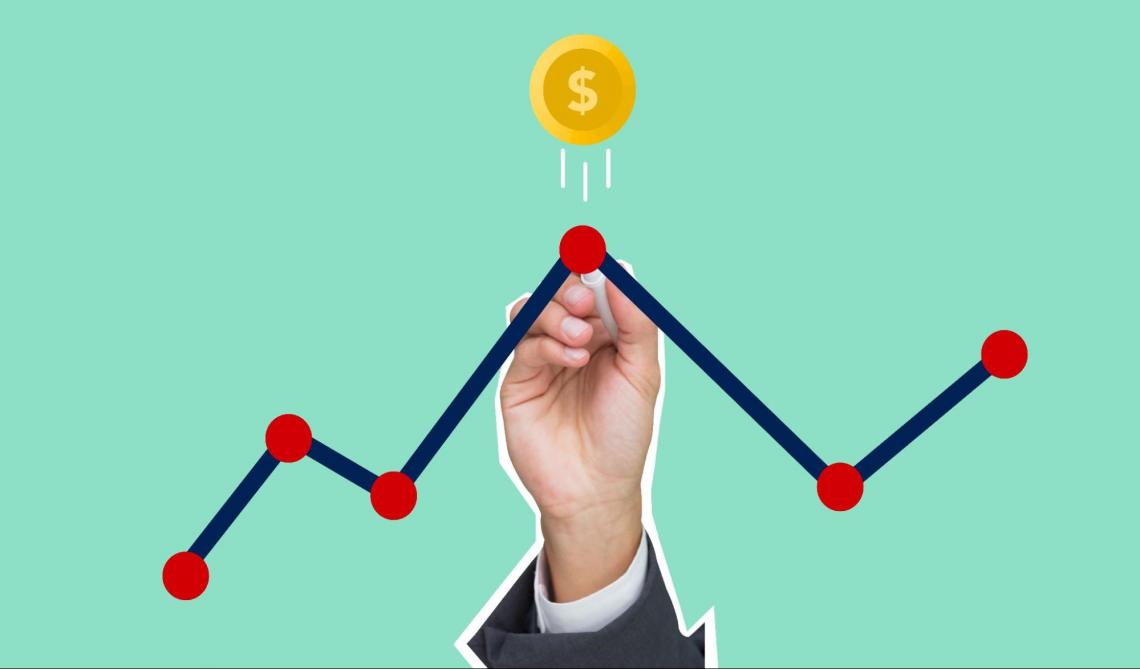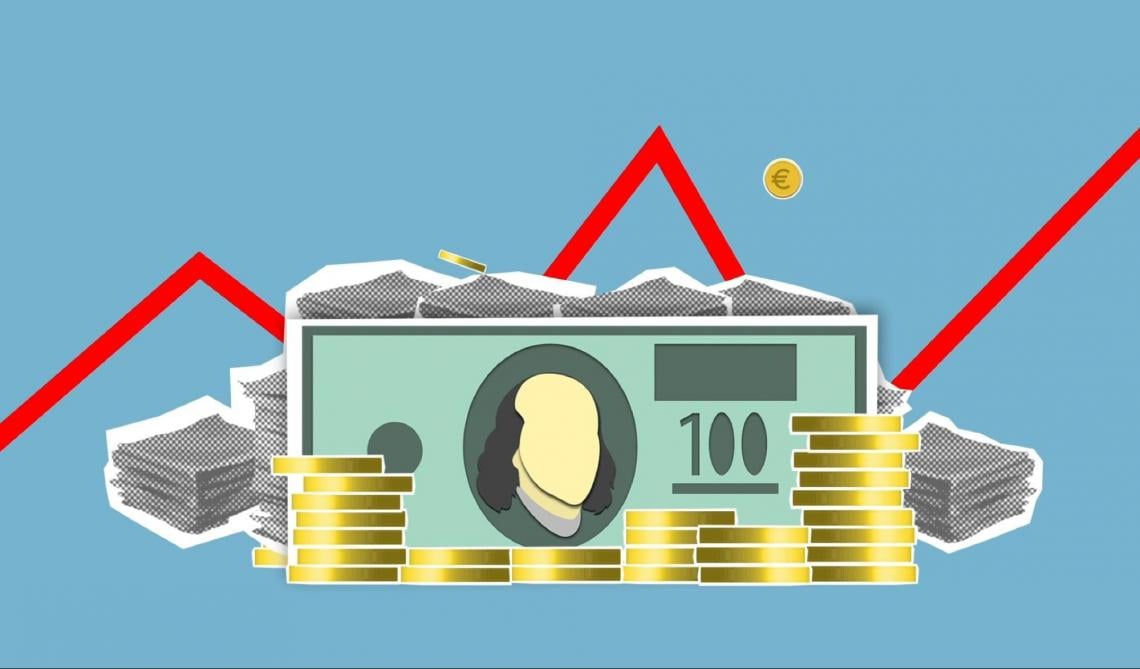Valuation Drivers
These are internal factors of a company that help expand its valuations.
Valuation drivers are internal factors of a company that help expand its valuations. These factors give the business a certain edge and quality by making the cash flows steadier, margins higher, less risky, etc.

These drivers positively affect a company's growth, efficiency, and value. Valuation drivers are unique to each business, and they should be used appropriately to get an accurate representation.
Ultimately a valuation driver helps increase the overall market cap and market share of the company may, whether it be public or private.
Valuation is usually looked at through multiples like price-to-earnings (P/E), price-to-sales (P/S), and price-to-free cash flow (P/FCF). And the valuation drivers help expand those multiples.
Valuation drivers, at times, can be at the denominator of the ratio, like cash flows, earnings, sales, etc. The consistency and quality of those metrics will decide the valuation of a firm.
These valuation drivers are considered while buying into or exiting a company.
There are no strict criteria that the value drivers have to be a financial metric of a company; it can also be qualitative.
The valuation reflects future business expectations, which are not just dependent on the data available on the financial statements; they are the end product. Other qualitative and human factors are just as important to drive future price and value.
Examples of Valuation Drivers
Drivers of value are not restricted to a company's financial statements; they stretch far beyond that. Valuation drivers are anything that increases the company's overall profitability or cash flows.

Value drivers are not the traditional metrics but qualitative factors like management efficiencies, frameworks, operational efficiencies, etc.
Value drivers can also be considered as moats for the company, giving it a competitive advantage over its peers.
For any analyst or buyer to assess the true value of a company, it is important to understand what factors drive the valuation of these specific firms.
These factors differ from company to company, sector to sector, and industry to industry. In some cases, firms in similar sectors cannot be valued on the same metrics as qualitative factors like management, frameworks, etc. can vary a lot.
The primary goals for valuation drivers are
-
Increase growth and efficiency
-
Reduce business risk
Below are some key factors in driving and deciding a firm's valuation.
Product/Service
This is the primary driver of valuation for a lot of firms. What differentiation and uniqueness can they provide in their product or service? This is classified as a financial driver.
A firm needs to get the product/service right and then build a strong framework around that product/service to have high customer retention.
This is directly responsible for the top line of a company, so if they get this right, it can be an excellent driver. The service/product defines the consistency and growth in the revenues.
Product differentiation is also a big factor in valuation. Products like Coca-Cola create differentiation through brand and IPs, which is why its consistency in revenue and premium valuations.

External factors like trends, industry headwinds, or tailwinds availability of credit also affect businesses with no product differentiation.
A good example is the Auto industry which was experiencing a downturn due to several factors like changing trends and lesser credit availability in the market due to sub-par economic conditions.
This can be reflected in the price-to-sales ratio; sales being benign is the key driver achieved through a superior product/service.
Example
Apple is one of the most recognized brands in the world, which has been made possible due to its superior product and the brand the company has built around that product.
Its product is what allows Apple to achieve consistently growing revenues and allows them to pass on any inflation in raw materials to its customers while still maintaining very healthy margins.
Innovation
Innovation is how firms thrive and make it through a downturn or stagnation in the business environment. Innovation is more of a qualitative factor.

Though it is qualitative it can be measured through line items in the financial statements like research & development expenses (R&D), which cannot quantify the innovation but can quantify the capital allocated towards it.
R&D spending should be efficient, so even if a firm spends more compared to its peer group will not necessarily mean that it will have a better efficiency established.
There are a few ways innovation can be classified. One is product innovation, where money is spent on either improving the existing product or developing a new one.
Second is innovation done in operational efficiencies and machinery, which increase the output while lowering the overall frictional costs of the process, improving the margins.
Innovation and technology go hand in hand. Usually, an idea that is developed needs to be materialized, which is possible through tech.
Innovation is useful to get out of a decline phase of the corporate lifecycle.
Economies of Scale
Economies of scale are cost advantages a business obtains due to the scale they have achieved in its operations. Essentially economies of scale allow firms to produce a product at a lower cost due to its high volumes.

These high volumes make up for low margins, usually in the low single-digit range of 3% - 5%.
These advantages are usually achieved in a manufacturing business that usually specializes in selling low-cost products. Due to a highly competitive market and low product differentiation, the competition boils down to pricing.
And economies of scale allow companies to keep their prices low, bringing in high volumes.
Economies of scale are achieved with a combination of technical improvements increasing production efficiency and excellent internal control frameworks for working capital, financing, and managerial efficiency.
Example
Amazon is a textbook definition of economies of scale achieved. Due to their insanely high volumes, the cost per product is so low that they can easily undercut the competition in pricing.
This has allowed them to command a dominant market share in their retail arm which contributes to more than half of the revenues.
Walmart is another example where their high volumes allow them to price their product very low and crush the competition on pricing.
Market Growth/Tailwinds
Overall market/industry growth can also be a valuation driver. These are more suited toward cyclical sectors like automotive, metals, etc. In some cases, non-cyclical industries like IT services and tech companies have also shown great tailwinds in recent years.

Tailwinds occur due to a lot of economic factors; usually, the economic condition and the availability of credit are enough to trigger tailwinds in certain sectors.
Recently during covid, demand for consumer durables fell as there was not enough money in the economy, and debt was expensive. As their consumption can be delayed, their quarterly numbers fell.
So as the FED and other central banks increased the flow of money into the economy, unemployment fell and, credit became cheaper, people's purchasing power increased, triggering tailwinds in the consumer durables sectors. As a result, valuation expanded for those stocks for the next few quarters.
Like cycles, there is no specific period for tailwinds to last. If the economy is growing and the sector is directly related to economic growth, the tailwinds will last as long as the economic growth lasts.
Capital Allocation
Capital allocation is how well the management allocates capital to productive assets.

Capital allocation is key when the growth of the business is concerned. Good capital allocators ensure that the capital at hand is used most efficiently so that the returns on that capital are high and consistent and can cover the cost of capital.
Capex is how management allocates capital. Now the CAPEX can be through internal accruals (equity) or borrowing (debt). It is essential to ensure that the business operates at an efficient capital structure to maximize its returns.
The efficient capital structure differs from company to company and even from management to management. Some companies operate in such sectors that large amounts of debt are necessary for functioning, while some need very minimal debt.
The capital structure should be balanced enough. If there is too much debt, even if the cost of capital is low, the company's risk goes up, and if there is too much equity, the cost of capital goes up.
A good way to measure if the management is good at capital allocation is to look at profitability ratios like return on invested capital (ROIC), which tells us how much return is generated on the invested capital, which is the sum of total debt and equity.
Management
Competent management is a very important value driver for any business. Good management can increase the overall efficiency of the business. There are a few qualities that the management should have.

Vision is how a company positions itself for the future, and it must be clear and achievable. The management should regularly mention how it is working towards its vision.
Delegation is how the management can become more efficient, but it is a dual-edged sword. Too little delegation would mean everything is controlled by the upper management without any possibility of external feedback, which will hamper growth and drag down confidence in management.
Too much delegation would mean that the upper management is unwilling to take any responsibilities and increase the workload for others, dragging down efficiency. So delegation must be done cautiously and responsibly.
The management must also establish strong frameworks regarding risk, internal controls, etc. This will ensure that any change in management will not disturb the flow of the business, making it more efficient.
Technology
Technology is important for the growth and efficiency of every business. It is a key driver of valuation as it can make the overall business more efficient by driving down costs, increasing production, etc., thus making the business more profitable.

Technology is required by almost every business in today's environment, regardless of the sector.
The required tech can differ a lot. Manufacturing businesses need to make tech investments in their plant and equipment to make them more efficient or to diversify their product lines.
Companies in the retail sector need to make tech investments that improve their distribution and SAP software that make their working capital cycles more efficient.
With the use of technology, firms can make their processes more efficient, leaving more profit and free cash flows, which can be used to fuel growth, invest in vertices, or payout dividends.
All of the activities mentioned above help the business to solidify its market position by either growing at a higher rate due to higher reinvestments, expanding vertically, or retaining shareholder loyalty and gaining stability through dividend payments.
Key Takeaways
Valuation drivers are internal and external factors of a business that allows them to trade at higher valuations.
Higher valuations are usually the result of improvement in the quality of the business or positive future expectations.
Types of Valuation Drivers
-
Product/Service
-
Innovation
-
Economies of Scale
-
Market Growth/Tailwinds
-
Capital Allocation
-
Management
-
Technology




or Want to Sign up with your social account?